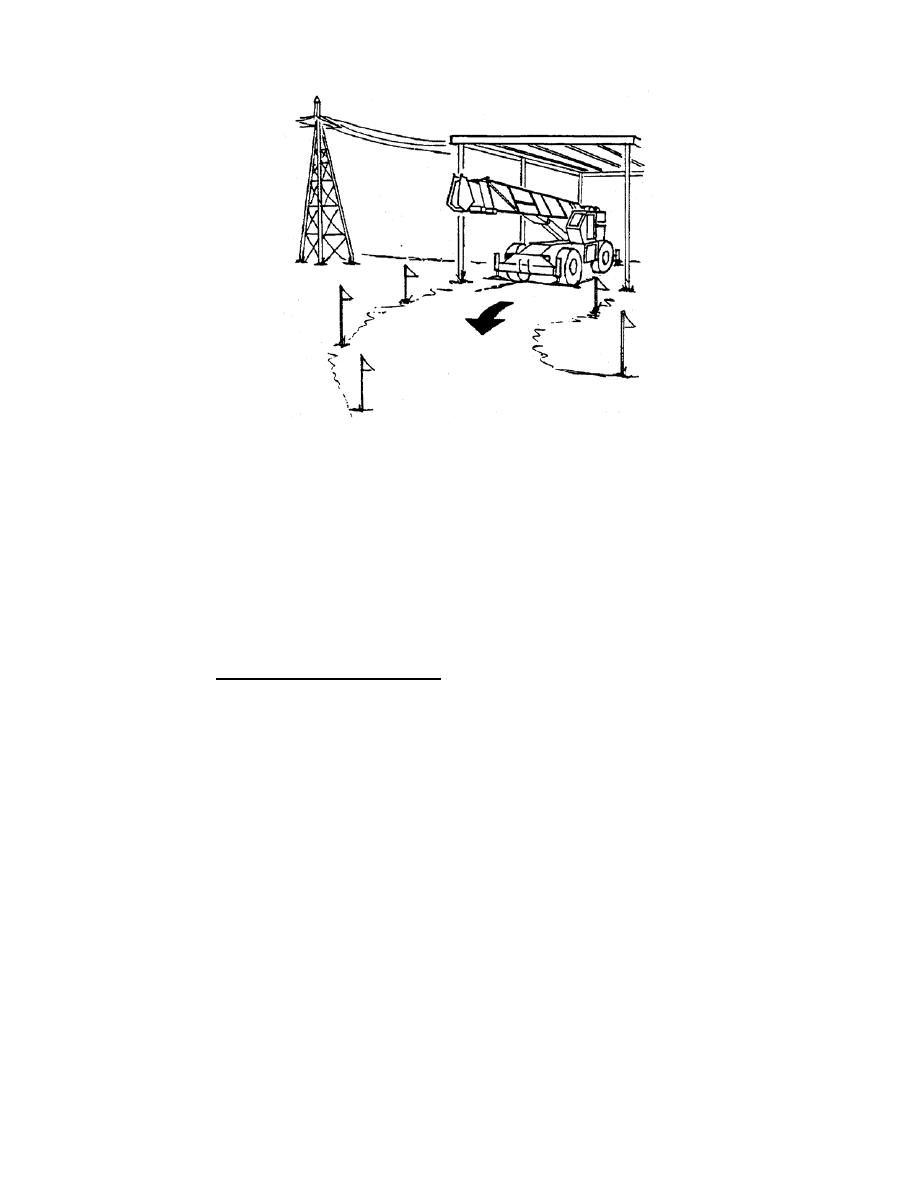
TM 5-3810-307-10
Plan ahead and always plan a safe route before traveling under power lines. Rider
poles should be erected on each side of a crossing to assure sufficient clearance is maintained.
Appoint a reliable and qualified signal person, equipped with a loud signal whistle or
horn and voice communication equipment, to warn the operator when any part of the crane or load
moves near a power source. This person should have no other duties while the crane is working.
Tag lines should always be made of non-conductive materials. Any tag line that is
wet or dirty can conduct electricity.
DO NOT store materials under power lines or close to electrical power sources.
2-7.2
Electrocution Hazard Devices.
The use of insulated links, insulated boom cages/guards, proximity warning devices,
or mechanical limit stops does not assure that electrical contact will not occur. Even if codes or
regulations require the use of such devices, failure to follow the rules listed here may result in
serious injury or death. You should be aware that such devices have limitations and you should
follow the rules and precautions outlined in this handbook at all times even if the crane is equipped
with these devices.
Insulating links installed into the load line afford limited protection from electrocution
hazards. Links are limited in their lifting abilities, insulating properties, and other properties that
affect their performance. Moisture, dust, dirt, oils, and other contaminants can cause a link to
conduct electricity. Due to their capacity ratings, some links are not effective for large cranes and/or
high voltages/currents.
The only protection that may be afforded by an insulated link is below the link
(electrically downstream), provided the link has been kept clean, free of contamination, has not
been scratched or damaged, and is periodically tested (just before use) for its dielectric integrity.
2-12

